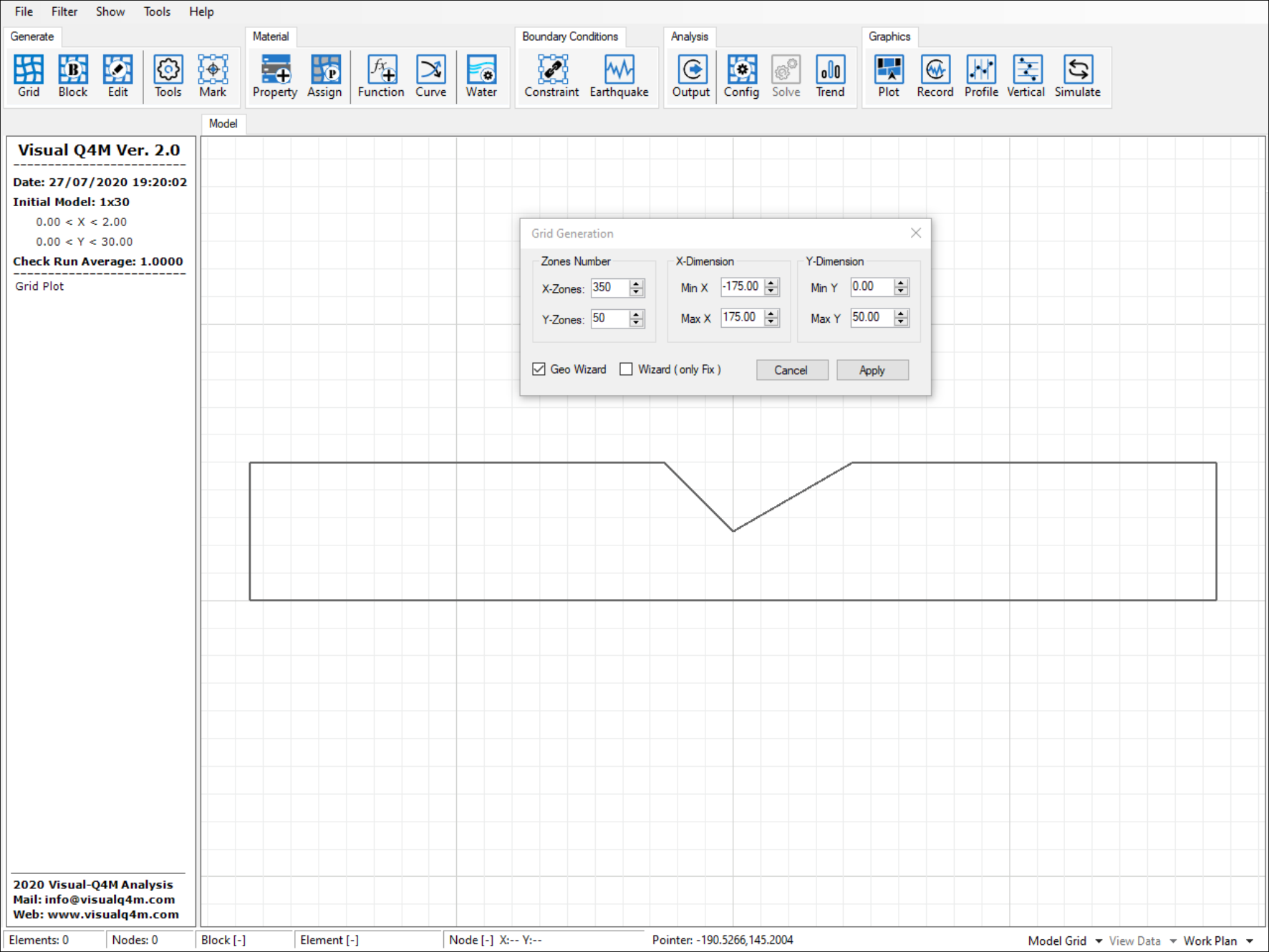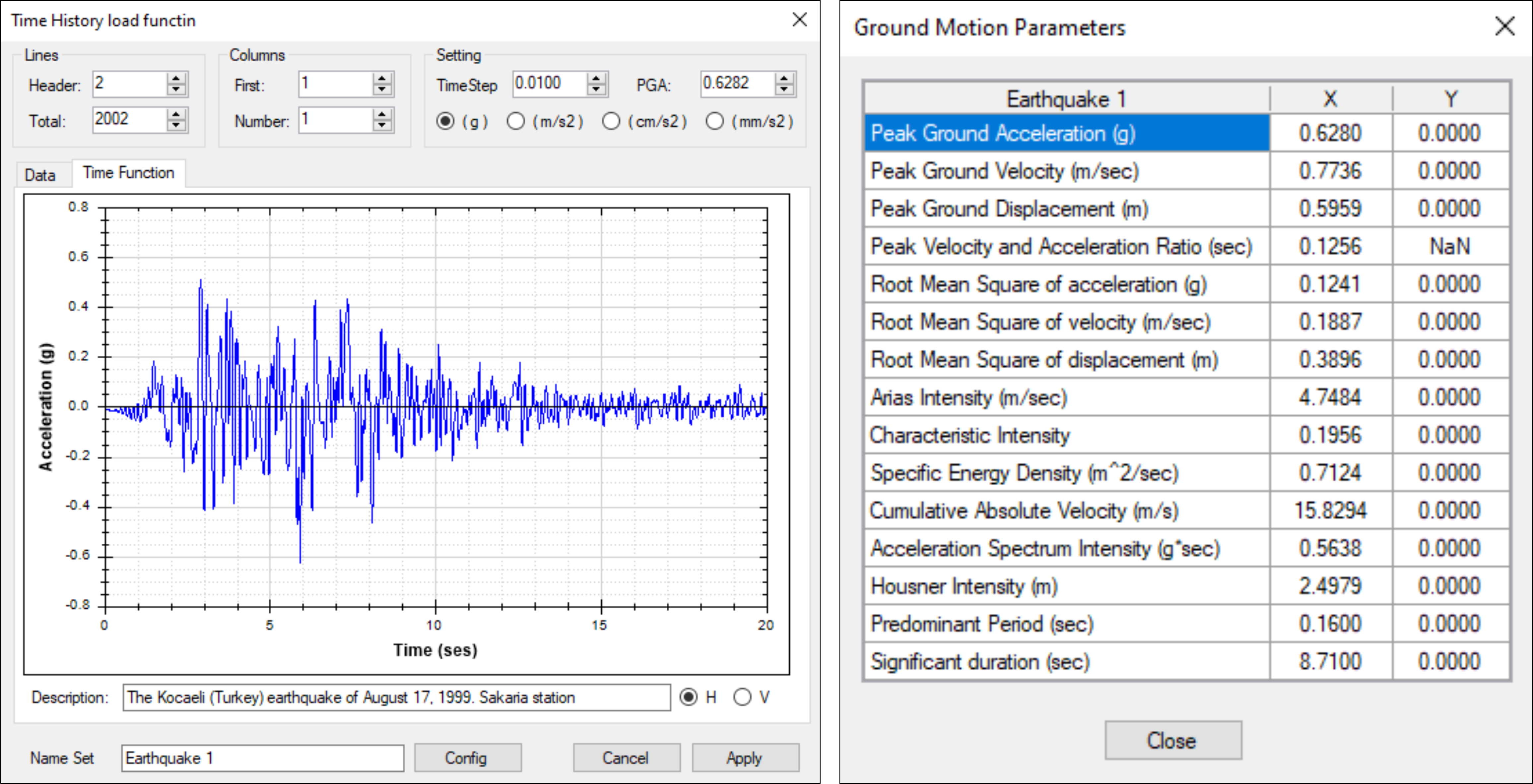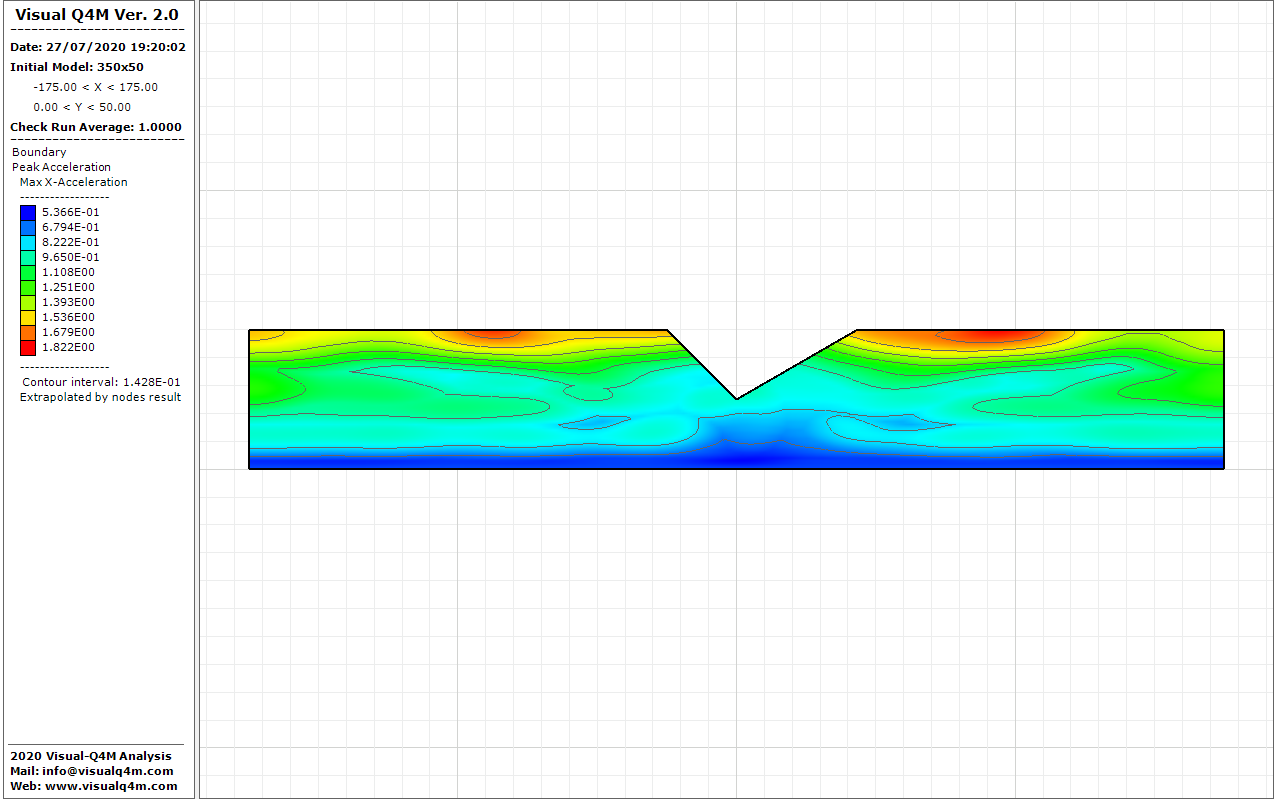Problems solving 2D: Focusing Effects (Canyon Model)
In the calculation it was considered a simple model mono-lithological with a topographic trend characterized by different slopes (45° and 30°).

Geometry and Material Properties
For the construction of the model a DXF file is used. The model has an extension of 350x50 meter, and it's makes of 16633 regular elements and 17059 nodes.
Material Properties
| Density | Wave Vs | Shear Modulus | Poisson Ratio | Damping |
|---|---|---|---|---|
| 18000 N/m2 | 286 m/s | 1.500E8 N/m2 | 0.471 | 5.0 % |
Boudary Conditions
The column have a behavior in shear and the vertical motion (Y) is inhibited to eliminate bending modes. The loading is applied to the base (XY).
You apply the load horizontal component only in the nodes with X-Direction locked:
- Node i = 1 j = 1-51 --> Fix Y-Direction
- Node i = 351 j = 1-51 --> Fix Y-Direction
- Node i = 1-351 j = 1 --> Fix XY-Direction
Input Motion
The horizontal acceleration (PGA: 0.628g to 5.960s, dt:0.01s, Time: 20.0s) is Sakaria.acc which is present in the internal database. Only the horizontal component is used.

Results
The different topographic conformation, creates different areas of focus of the seismic waves. On the side of the minor slope (30°) the affected area is wider, unlike the side with a higher slope (45°)

During the calculation cycle the accelerations in output on three nodes are monitored. The transfer function (shown below) is calculated on node 276.51 (highlighted on model).
